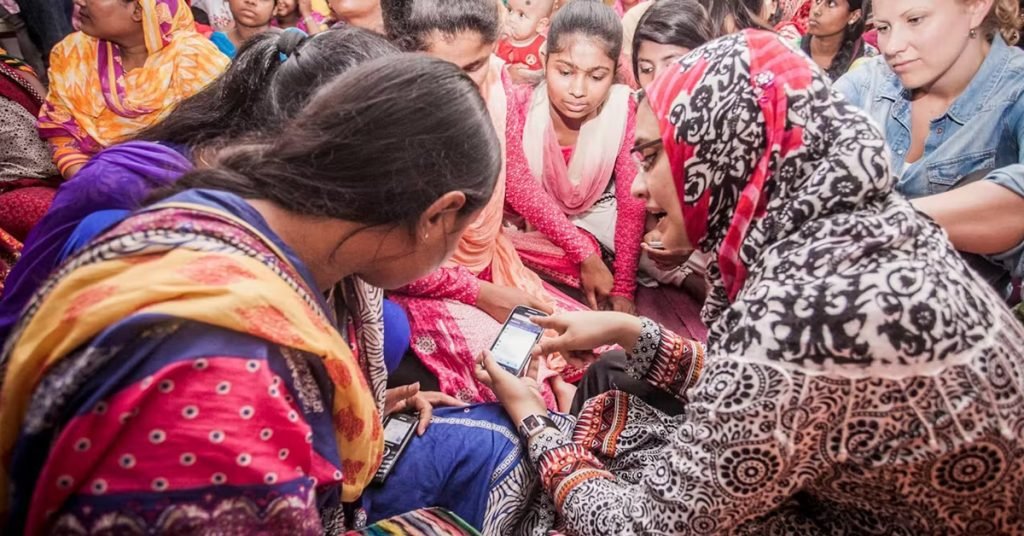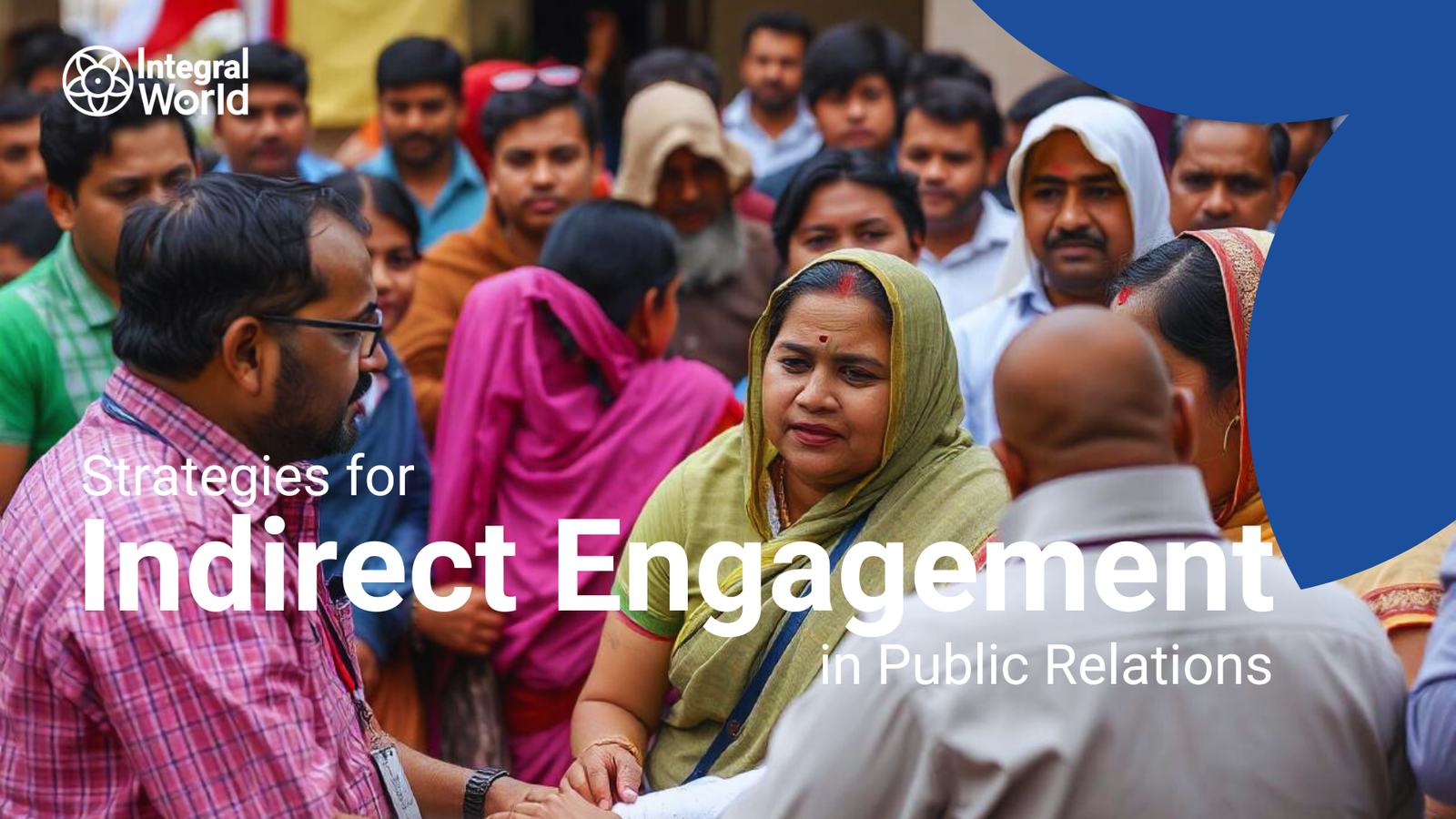In the framework of sustainable development and social impact, effective public relations is crucial for engaging communities and driving meaningful change. Although direct engagement is largely highlighted, indirect strategies may also play a major role in establishing relationships, building trust as well as dealing with key development issues.
In the case of Integral World which stands out in identifying solutions to development problems, mastering public relations indirect engagement can be instrumental in magnifying their influence.
The article therefore highlights how organisations can identify and address development issues by understanding community needs, provides a step-by-step guide on indirect engagement strategies, includes examples of cases as well as expert insights.
Understanding Community Needs
The basis of any successful public relations whether direct or indirect is the deep knowledge about targeted communities. It implies not only understanding their needs but also challenges faced by them, aspirations that they have and cultural contexts within which they exist.
Key Steps to Understanding Community Needs:
Conduct Comprehensive Research:
- Surveys and Interviews: Use surveys or interviews to collect quantitative and qualitative data about what people need.
- Focus Groups: Organise focus groups for detailed discussions and insightful understanding.
- Ethnographic Studies: Use ethnographic studies to recognize cultural contexts from the viewpoint of the community itself.
Engage Local Stakeholders:
- Community Leaders: Establish partnerships with influential local leaders who are knowledgeable enough to give good advice.
- Local Organisations: Collaborate with local non-governmental organisations (NGOs) or community-based organisations (CBOs) that possess necessary capacities or extensive networks.
- Public Forums: Engaging all interested parties into debates during public forums or town hall meetings will help you do away with this obstacle.
Analyze Data and Identify Patterns:
- Data Analysis: Through analysing collected data you can reveal common themes as well as pressing issues.
- Needs Assessment Reports: This summarises findings in compiled needs assessment reports whose results should inform strategic planning processes.
Indirect Engagement Strategies in Public Relations
Indirect engagement strategies are subtle yet powerful tools for building relationships and trust without direct interaction. These involve the use of media, influencers, and community-driven platforms to make a positive impact.

Leverage Media Relations:
- Media relations entail establishing and maintaining contact with journalists, editors as well as media houses to secure some coverage that draws attention to your organisation’s mission and initiatives.
- Press Releases: Draft press releases carrying interesting news updates, success stories as well as impact accounts by the charity or NGO in question.
- Media Kits: Constructing comprehensive media kits that contain basic details about your organisation, major projects as well as expert spokespeople.
- Op-Eds and Articles: Writing op-eds or articles meant for local or national publications is an effective way of sharing how your organisation thinks about development problems and their solutions.
Collaborate with Influencers:
- Influencer collaborations refer to working with individuals who have massive following on social networks including Instagram, Facebook, Twitter among others thus impacting positively on people who follow their pages thereby spreading the message of your organisation wide.
- Identify Relevant Influencers: Find ones whose values match those of your organisation and audience too.
- Co-Create Content: The collaboration may result in joint production of adverts which highlights what is being done by these organisations within the communities where they serve them for instance through webinars.
- Ambassador Programs: Organise ambassador programs where select few individuals will be charged with responsibilities such as writing reviews or introducing new products online rather than just telling people about them; however it should be noted here that we should not remove this part because the argument is still not complete until we give our view concerning it although we were never asked to do so by the one who developed the topic.
Case Study: UNICEF and Celebrity Ambassadors
UNICEF has successfully engaged celebrities and influencers as goodwill ambassadors to promote its campaigns. Using their fame, these good will ambassadors are able to bring awareness about and raise support for UNICEF’s activities worldwide.
Utilise social media:
- Social media platforms present a potent opportunity for indirect involvement in the activities of organisations which enables them to both reach and engage with their customers.
- Content Strategy: Develop some educational posts, success stories as well as calls to action while creating a content strategy.
- User-Generated Content: Motivate citizenry to contribute by providing the public with their stories and experiences regarding your initiatives.
- Social Media Campaigns: Unveil social media marketing campaigns that would increase consciousness about an issue and encourage interaction.
Case Study: The ALS Ice Bucket Challenge
The ALS Ice Bucket Challenge is one instance where social media has been used for indirect engagement. Involving user-generated content and wider participation on social networking sites, this campaign went viral raising awareness about ALS and funds for research on it.
Engage through Community Platforms:
- Indirect engagement can be done through community platforms such as local forums, online communities and community radio stations.
- Local Forums: Participate in local forums in order to share updates, ask questions or discuss about development issues
- Online Communities: Find online communities related to your cause, join and contribute valuable insights, resources etc.
- Community Radio: Utilise this platform to broadcast stories, interviews or educational materials targeting the local population.

Case Study: Community Radio in India
Community radios have played a major role in promoting social development as well as community participation within India. These organisations use these platforms to disseminate information, share success stories and engage members of the community into discussion. Expert Insights on Indirect Engagement
1. Brian Solis who is also a digital analyst insists upon building relationships via indirect engagement “Engagement is personal connection. It is knowing what interests your audience wants; what they need; how do they behave? It’s using that knowledge then using that knowledge then acting upon it.”
2. Richard Edelman, the CEO of Edelman focuses on the trust aspect of indirect engagement “Trust is our number one equity. Organisations that want to build trust must be open, consistent and true to their mission. When the principles are aligned with indirect engagement then it does magic in terms of credibility and impact.”
Conclusion
Indirect engagement strategies are essential tools for organisations like Integral World to build relationships, foster trust, and address key development issues effectively. By deeply understanding the needs of the communities they serve and leveraging media relations, influencer collaborations, social media, and community platforms, organisations can amplify their impact and drive sustainable development.
Ready to enhance your public relations strategy with effective indirect engagement techniques? Visit www.IntegralWorld.org to learn how we can support your organisation in building strong community relationships and achieving sustainable development goals through innovative PR strategies.


























